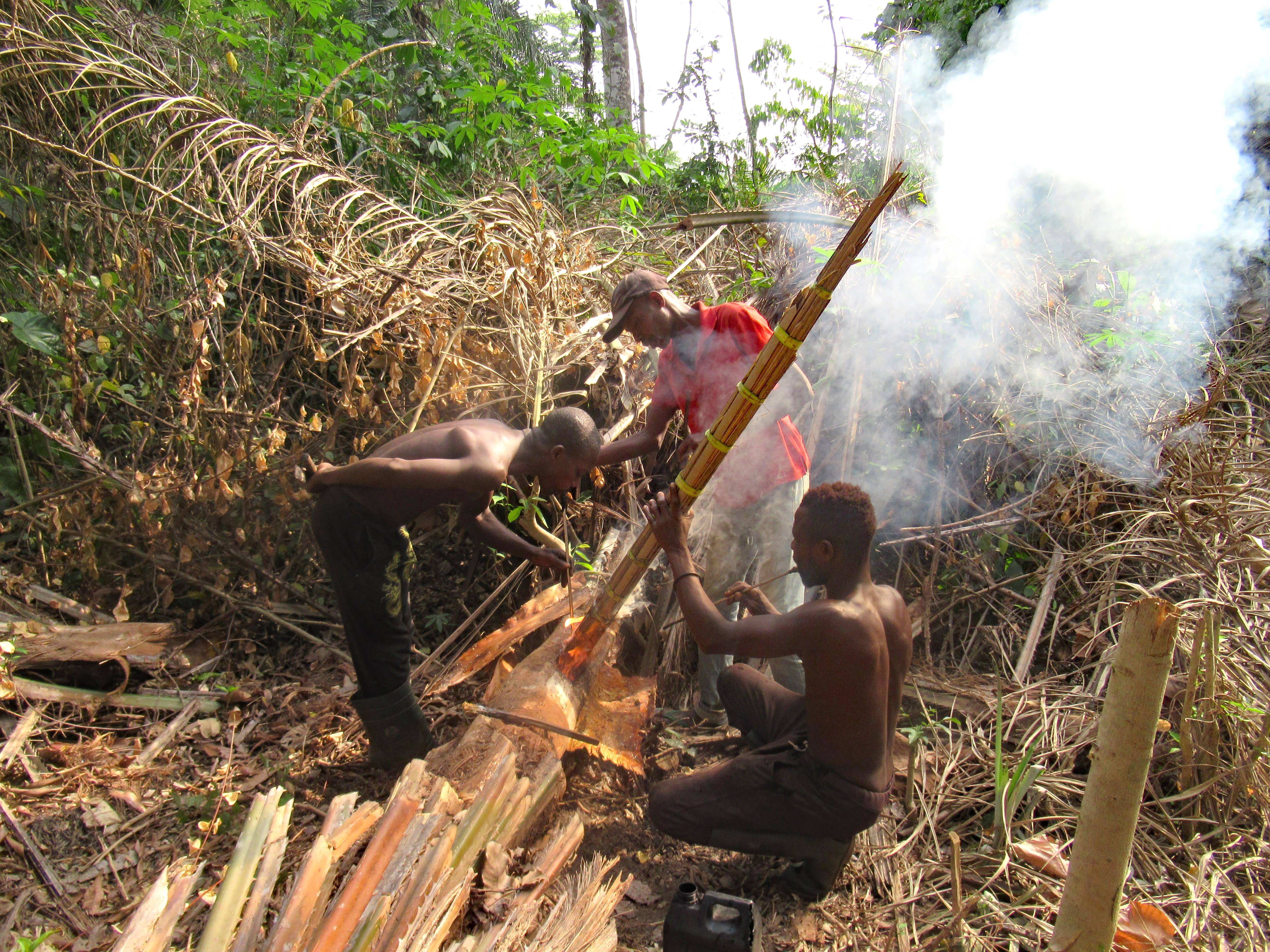Wli Agumatsa Waterfall, the tallest in West Africa, has both lower and upper falls and a trek from the visitors’ centre took us to the former as the hike to the latter was too strenuous for a couple of ‘Silver Travellers’.
As expected, guides were mandatory, and although ours had a slight stature set off at quite a pace, chatting and chuntering while we were happy to enjoy the walk. However, he did tell us that we were walking through the Agumatsa Wildlife Sanctuary, but that it was devoid of wildlife.
We crossed the first of nine metal bridges where the loud clattering caused by misaligned sections startled us, so where possible we used the original concrete bridges, although not all were accessible.
The guide showed us various bushes and trees with ‘coffee and Nescafe’ being a particular favourite, but there was also mango, avocado and cocoa. He repeatedly pointed out the mountains which surrounded us seemingly on all angles, the location of Togo to neighbouring countries and the multitude of paths leading to the higher falls.
We came upon three youths making palm wine and despite his detailed explanation, it remained a mystery although it appeared to involve cutting holes in dead trees, bamboo, and smoke.
We’d been told the 45-minute walk was flat, and although I feared it would involve an incline at some point, it was a very pleasant walk on even terrain.
As we neared the falls it was impossible to miss a high-pitched chirping from an enormous colony of straw-coloured fruit bats on the adjacent cliffs. The guide banged his stick against a log, and they began circling which was an amazing sight.
The waterfalls, with an 80m drop were pretty amazing even in the dry season. There was a small shore and, although our itinerary suggested we could paddle or swim, we let our guide wade in alone.
On the return visit, the guide repeated everything he told us on the way there and by the time we got back our ears were ringing, and we avoided the few ‘tourist shops’ and declined an opportunity to buy palm wine.












